COVID-19 – economics behind the pricing of face masks
In Vietnam, the COVID-19 has inflated the price of face masks 5-7 times its original price, if not more, according to Tuoi Tre News. The average price level before the virus was about VND40,000 per box (approximately $1.74), but now it is VND200,000-300,000 ($8.70-13), with some even at VND350,000 ($15.22).
These face masks often have little proof of origin and have no listed price on the shelves. Some local medical stores are suspected to have taken advantage of the current situation to make profit, and some have even withheld their supply of face masks to wait for prices to increase. Despite the absurd price of this common good, customers (especially in Hanoi and Ho Chi Minh City) are still lining up, allowing stores to raise the prices even higher.
Local authorities have made varied attempts to control the situation, from penalising small pharmacies for proclaiming unreasonable prices and confiscating illegally-stored face masks to voluntarily handing out free masks to the public.
Although these actions show that the police have acknowledged the need to be involved in this escalating matter, they are still deemed to be made unilaterally on a case-by-case basis, and may not be efficient in the long run. There seems to be no officially announced standard price for face masks, and this allows sellers to freely set their own prices according to demand. At this rate, with the uncertainties around the virus and the widespread fear accompanying it, the price of face masks could continue to rise.
Vietnamese citizens seem to be willing to purchase face masks regardless of the price, resulting in relatively inelastic demand, that is, even substantial increases in prices would not much change the quantity consumers are willing to purchase. This is due to the lack of substitutes for face masks and the growing need for this product in the short run.
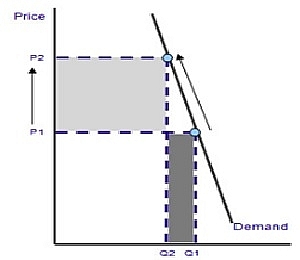 |
| Figure 1: Price inelastic demand curve for face masks |
Considering Figure 1, as price increases from P1 to P2, the quantity of face masks demanded only decreases marginally from Q1 to Q2. This behaviour allows suppliers to increase prices while still selling around the same amount, subsequently maximising profit. From this stance, in the spread of the coronavirus lie lucrative opportunities for business.
At this rate, the market for face masks might attain an inelastic demand curve, with prices increasing at an exponential rate. Furthermore, the hiking prices also depend on the law of supply and demand as seen in Figure 2 below:
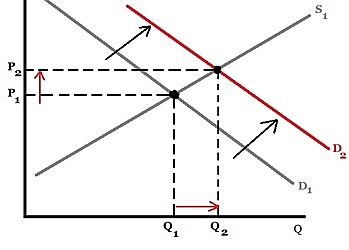 |
| Figure 2: An increase in demand for face masks |
We have seen a recent increase in the demand for face masks from D1 to D2, which leads to a rise in price from P1 to P2. The quantity being demanded and supplied should also increase from Q1 to Q2, but in reality, there is a shortage in quantity, preventing producers from supplying at the equilibrium price.
Based on Figure 1 and Figure 2, the price of face masks is predicted to continue increasing, while the quantity supplied may not be sufficient to support the demand. To protect consumers’ rights, as well as stabilise the market, it seems necessary for the government to intervene by setting a price ceiling, or a maximum price, below the equilibrium price, preventing producers from further raising prices.
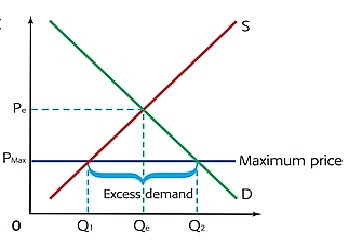 |
| Figure 3: Price control on face masks |
The figure above represents what would happen if the government implemented a maximum price for some time in the market. Without government interference, the quantity demanded and supplied will be Qe at the equilibrium price of Pe. At the imposed price, Pmax, the quantity demanded will land at Q2. Therefore, there will be surplus of demand, which may lead to several problems.
First, the shortages of face masks may cause black (or underground) markets to arise and provide for consumers at higher prices. This may eventually lead to shadow economies, and governments would not be able to collect taxes and would experience a decrease in revenue. Second, consumers may be made to queue up for the goods, leading to an uneven and unfair distribution of goods.
To prevent such problems from arising, the government may have to take further measures (apart from price ceiling imposition), mainly by increasing the supply of face masks through direct provisioning or subsidies.
Direct provisioning is not possible since the government is not a producer. Subsidies then could be the choice, in which the level of subsidy depends on the state budget, but typically being a fraction of the difference between the reasonable market price and the ceiling price. The government may also request banks to offer some concessional loans for firms which produce large amounts of face masks.
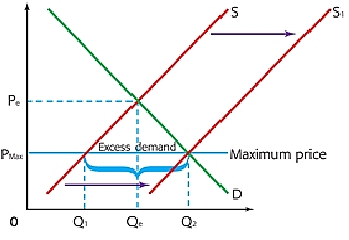 |
| Figure 4: Government actions to prevent excess demand |
By doing so, the government would shift the demand curve to the right, so the equilibrium price will drop from Pe to Pmax, with Q2 face masks being supplied and demanded. This increase of supply would support the higher demand of consumers, even with the price control, as the quantity supplied would increase from Q1 to Q2. In this case, the government would have to incur an opportunity cost, that is, to reduce expenditure in other areas.
In addition, several other considerations have to be made. First, the price ceiling will have to be carefully calculated according to the state budget and based on the market price. Second, the government should publicly announce the price ceilings for face masks and provide clear guidelines for suppliers to follow. This would also allow law enforcement to take effective measures to prevent any suppliers from exceeding the price ceiling and stabilise the market. Third, the price ceiling policy should be abolished once the coronavirus has been brought under control.
Some countries in Southeast Asia, namely Laos and Malaysia, have already proceeded to apply price control on face masks. According to Vientiane Times, the Ministry of Industry and Commerce of Laos has set price ceilings for face masks, allowing a box of 50 masks to be sold at 25,000 Lao kip ($2.81) maximum. Malaysia has also set price controls on face masks during the haze crisis at the end of 2019, with the maximum wholesale price of RM5-30 ($1.19-7.16), depending on the type of masks sold.
Other Asian countries, such as Sri Lanka, have also started controlling the price of this product, according to Economy Next. Were the Vietnamese government to consider setting price controls, the average maximum price of face masks in neighbouring countries could provide some reference. Ideally, the price ceiling should be marginally greater than the normal price, so as to allow companies some room for adjustment. For Vietnam, this would approximate to VND50,000-60,000 ($2.17-2.61) per box, depending on the government budget and the types of masks on the market.
To safeguard people amidst the contagious COVID-19, the Vietnamese government should look into this matter and make informed decisions based on the present situation. The price of face masks will continue to rocket to higher, more absurd levels without proper government intervention, and this situation may result in further hysteria and eventually market failure. The government should play a crucial role in stabilising the market and offering the best options for its people.
What the stars mean:
★ Poor ★ ★ Promising ★★★ Good ★★★★ Very good ★★★★★ Exceptional
Related Contents
Latest News
More News
- AstraZeneca profit up on strong sales of cancer drugs (April 25, 2024 | 17:37)
- Call to arms for semiconductor roles (April 25, 2024 | 17:00)
- SABECO outlines growth plans for 2024 (April 25, 2024 | 16:15)
- A strengthened high-tech workforce for semiconductors (April 25, 2024 | 15:00)
- Vietnam commits $1.08 billion to train 50,000 semiconductor engineers by 2030 (April 25, 2024 | 14:51)
- Localities on first step towards training microchip labour force (April 25, 2024 | 13:00)
- Agricultural produce seeks to conquer e-commerce market (April 25, 2024 | 10:15)
- Hai Long Construction's successful 25-year journey (April 25, 2024 | 08:00)
- E-commerce platforms help to spread agricultural value (April 25, 2024 | 07:30)
- Standard Chartered revises down Vietnam's 2024 GDP growth forecast to 6 per cent (April 24, 2024 | 15:04)



 Tag:
Tag:
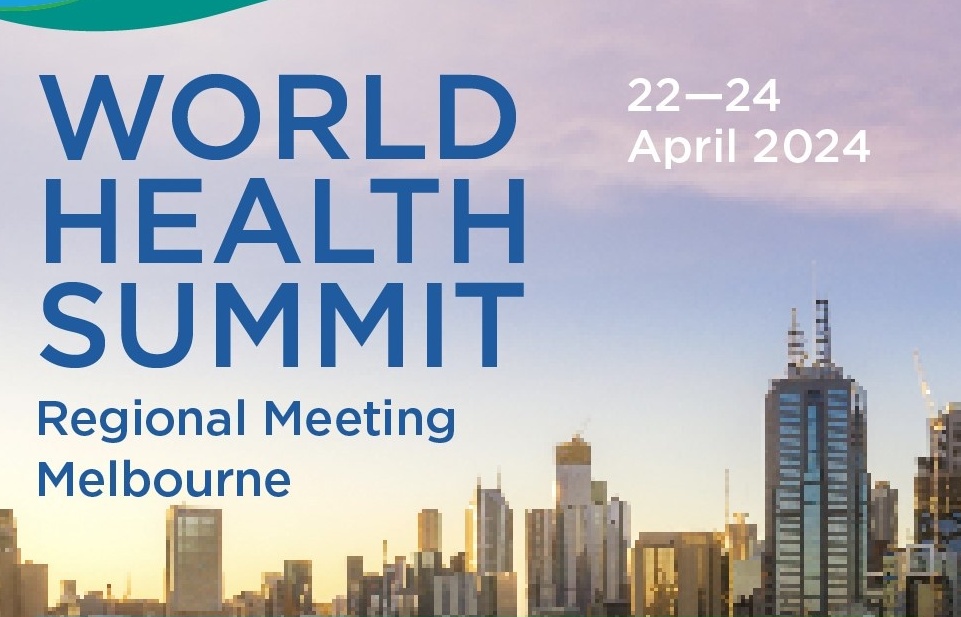

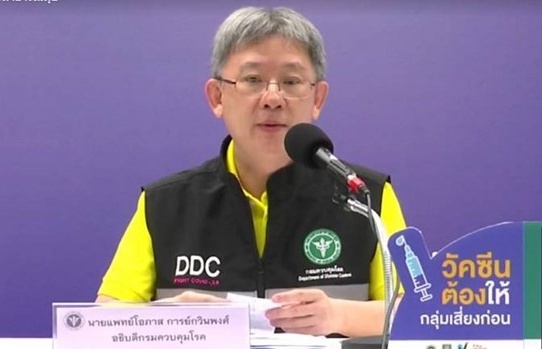
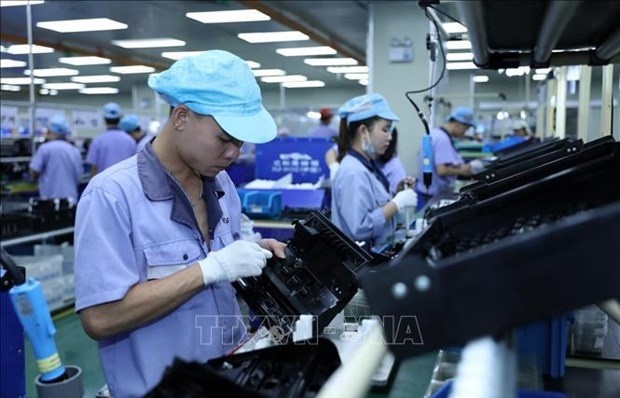
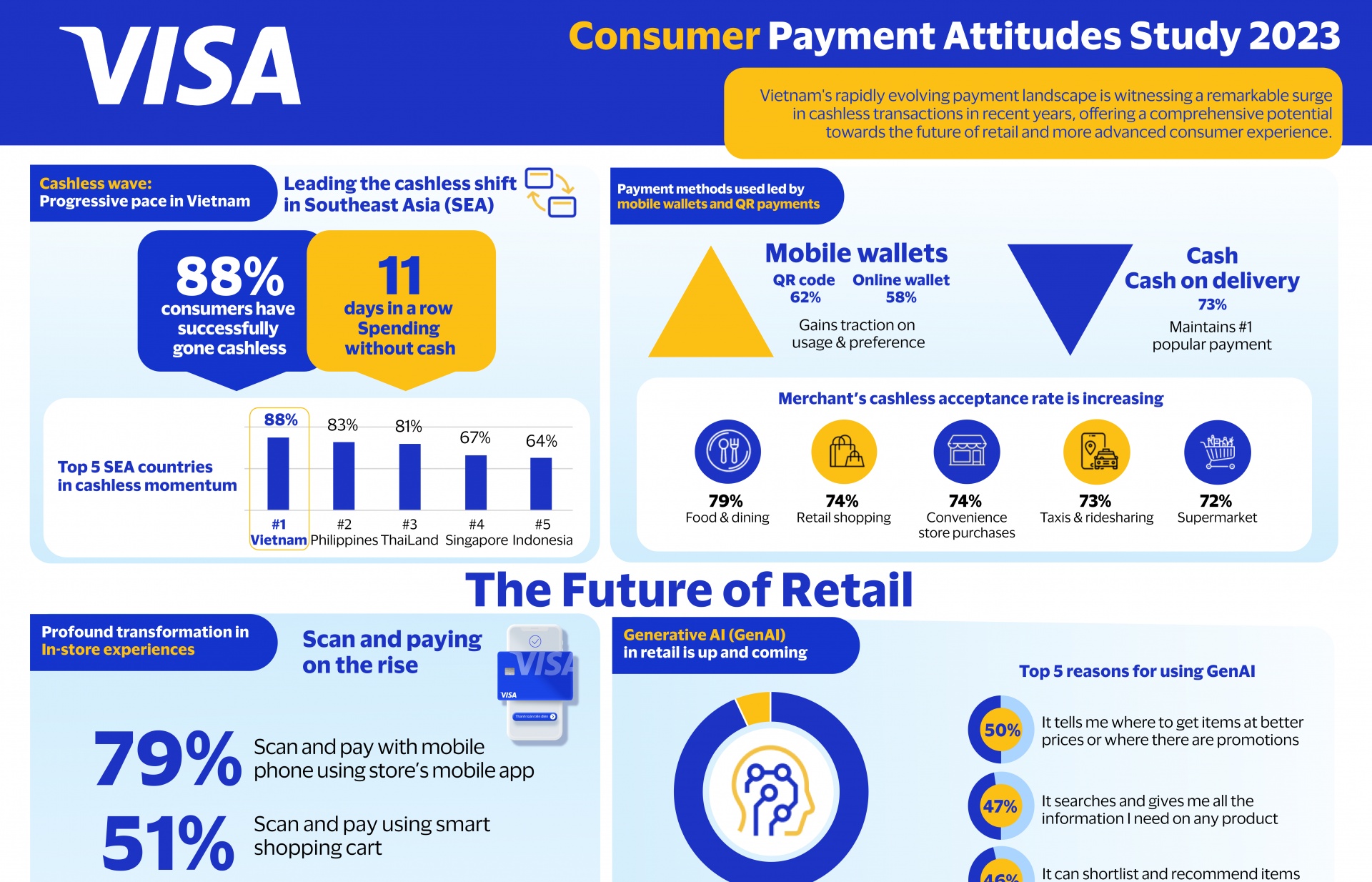
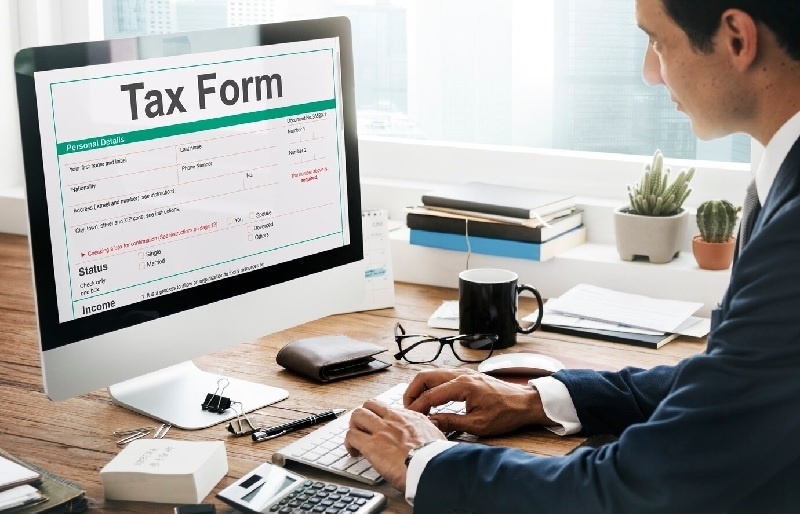
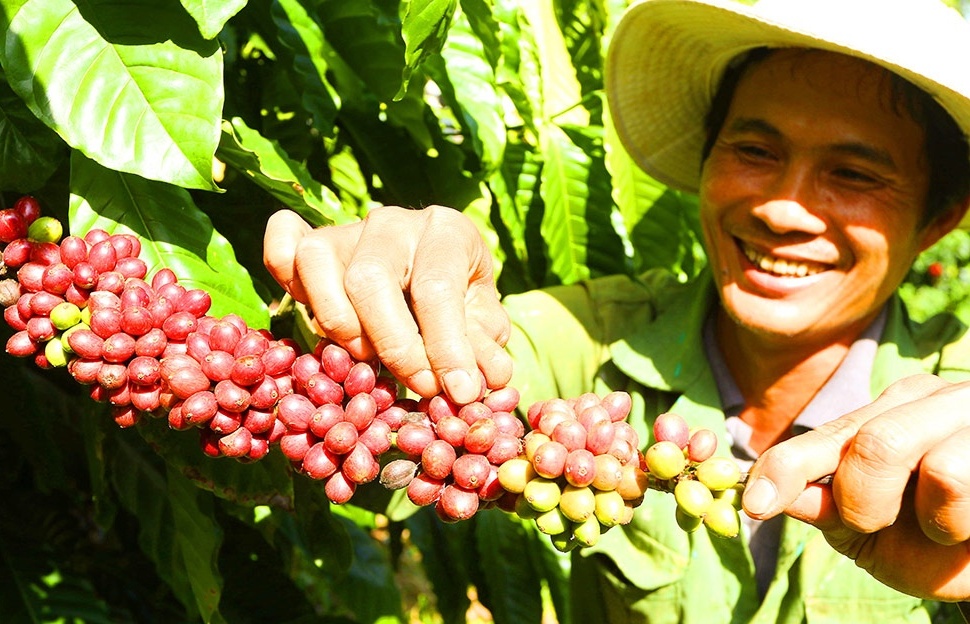
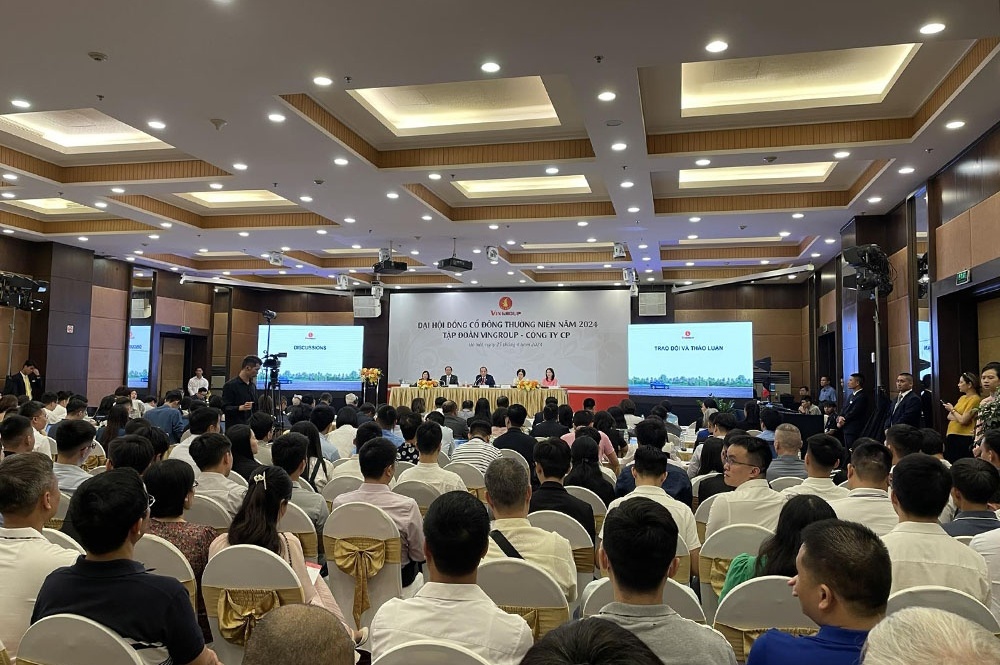









 Mobile Version
Mobile Version